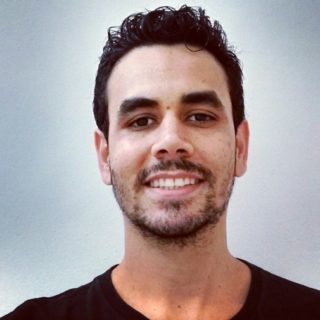How I’m learning pincha
I’ve been practicing pincha on a daily basis for 3 weeks now. And at first, I naively thought it’d be easy since I knew how to headstand.
But of course, I was wrong.
After my first attempts and a LOT of frustration, I had to take a step back and acknowledge that it won’t happen overnight. I lacked shoulder and core strength terribly, so there were no possible shortcuts.
Once I let go of the expectations of mastering pincha in only a few days, I focused on building up a strong foundation and here’s what I’ve been doing so far.
Pincha drills
I came back to the basics and added to my daily practice:
- Planks: at least 1min
- Forearm planks: at least 2min
- Dolphin pose: at least 5 breath
- Dolphin one leg up: at least 5 breath
- Dolphin push-ups: I’m not sure if that’s how you call it but you start with dolphin and you touch your hands with your nose. And then repeat like 10 times. Remember to always engage your core.
- Dolphin pose to forearm plank: start from dolphin then walk your feet back and forth. At least 5 times.
From headstand to pincha
I wanted to learn how to balance myself in a pincha without having to focus on how to press. And the easiest way I found to enter it was to start with a headstand.
Here’s how you can do it too:
- Once you’re in a headstand position, rest one foot or both feet against the wall, rest your hands firmly on the mat, then push through your shoulders to lift your head up. If you can manage to do that, then congrats, it’s your first pincha!
- The next step is to try different leg shapes and find balance in it. From my (very short) experience I found it easier with bow and arrow, which is one leg tuck towards your chest and the other leg straight up still touching the wall. Don’t forget to breathe deeply, engage your core and push through your shoulders (yes I know it’s a lot of things to think about!).
- If you still have some energy left, then try to move away from the wall. Engaging your toes and core will help you to find balance.
- When you fall, catch your breath in balasana/child’s pose.
Press practice with a yoga wheel
I recently purchased a yoga wheel and it definitely helped me improve my pincha.
The first press I learned was with one leg up and pressing the ground as gently as possible with the lower leg. Sometimes I kick more than pressing but what I’m really trying to learn is to press with control to avoid falling once comes the time for me to practice without any safety net.
And the second press I found easy is puppy press. I managed to straighten my legs a few times already thanks to that one.
Next steps
It will be to practice without the yoga wheel. Then once I get the hang out of it, it will be to learn how to fall so I can practice safely without any props.
Frequency
I practice pincha 6 days a week. Sometimes it lasts only 10 min, sometimes it’s more than an hour. I’m a stubborn person and practice until my body is too tired and in no way I’d recommend this method to you.
What’s important is to listen to your body and only do what feels right for you.
And even if it’s only one minute of pincha practice every day it still adds up in the long term. It’ll take you more time to achieve it but what matters is to enjoy the journey. There is no rush and it’s definitely not a competition.
So be patient, practice and enjoy yourself!

